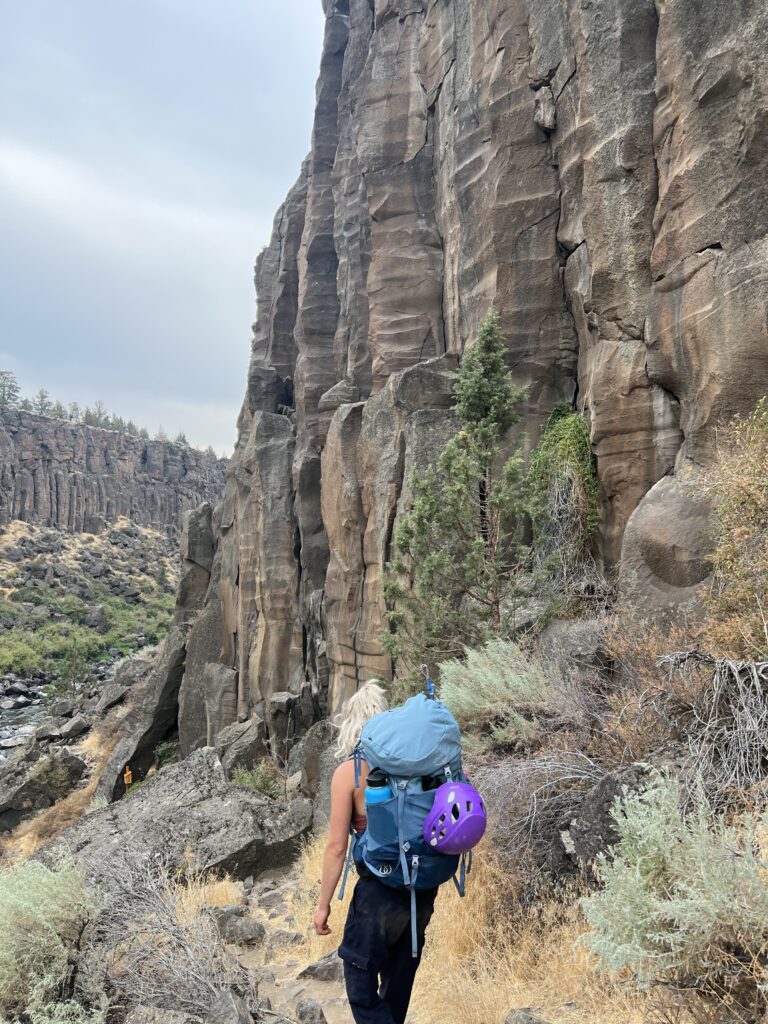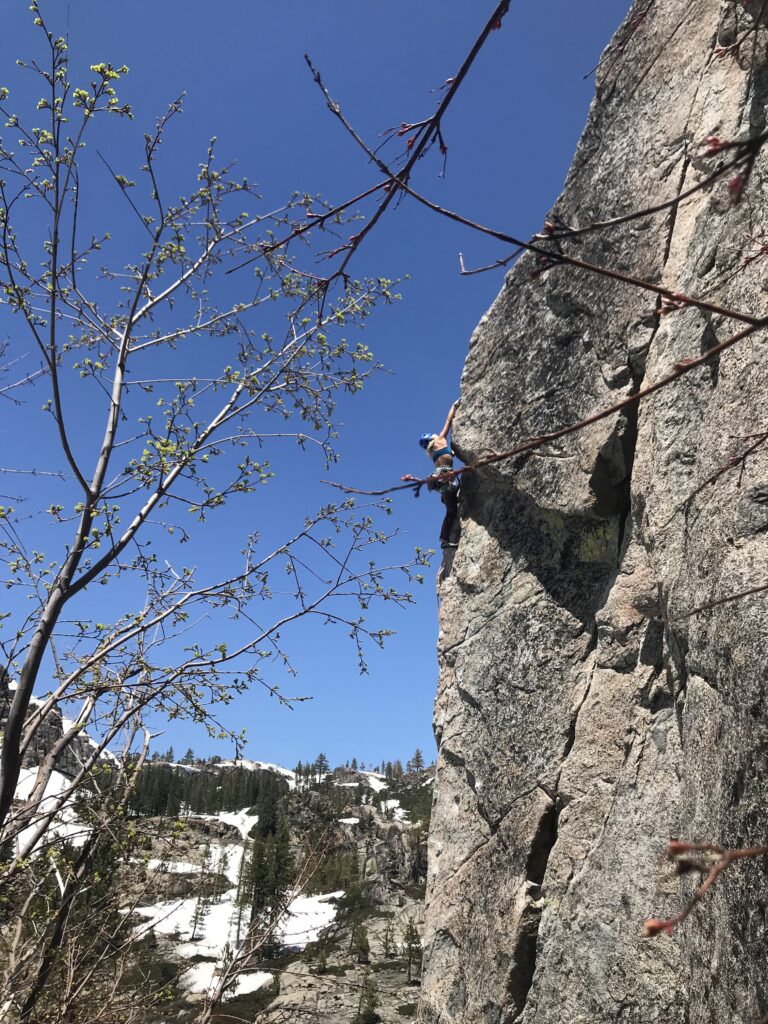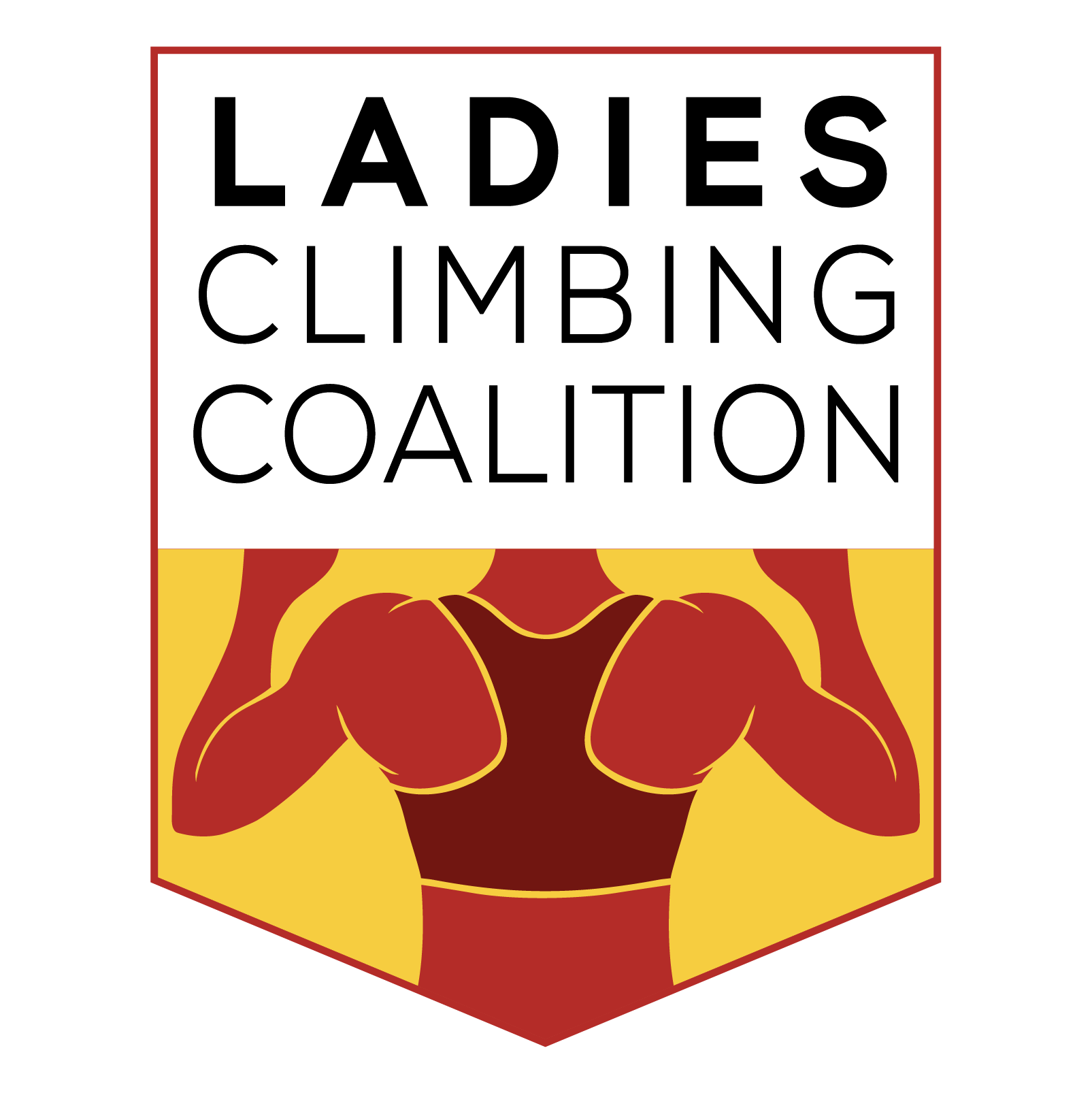24 Sep Sport climbing outside for the first time? Here’s what you need to know.
Posted at 21:47h
in Uncategorized
If you’ve been climbing in the gym for a while and are thinking of venturing outdoors, congrats! Climbing outside is a great way to both progress as a climber and spend some quality time in nature. However, there are some aspects of the sport that might feel quite different than the gym. Here’s what you need to know:

- Do your research: It’s not always easy to find the crag or identify the routes. Consider getting a guidebook, or download the Mtn Project photos for the area. If you have friends that have been to the area, ask them for beta! Knowing where you’re going will make your day more fun as well as safer– getting on the wrong route by accident can be a recipe for disaster.
- Be prepared to lead routes: Most routes outside are not able to be toproped, so make sure you feel confident leading in the gym before heading to a sport crag.
- Have the gear you need: Unlike the gym, where you just need a rope and a belay device, climbing outside requires a bit more gear. At a minimum, you’ll also need a helmet and Quickdraws.
- Learn how to build anchors: When you lead climb, you’ll often need to set up an anchor so other people can toprope the route. In many cases, this can be done by clipping two Quickdraws into the bolts or chains at the top of the route and clipping the rope through both draws so that gates are opposite and opposing. However, in some cases you may need to extend the anchor to reduce the rope drag or prevent the rope from running over a sharp edge.
- Understand safe top rope setup: If you do go to an area where top ropes can be set up without leading, make sure you know how to safely set up the rope. In most cases, crags like this will have a place where you can walk around to the top of the cliff, where you will find bolted anchors. If these anchors are on top of the rock formation instead of on the cliff face, make sure you extend your anchor so the rope doesn’t run over the edge of the cliff (this will wear your rope). Bring anchor building supplies like cordelette, slings, and locking carabiners. A common anchor setup for applications like this is a quad anchor, which you can make out of a quadruple-length sling and some locking carabiners.
- Consider bringing a stick clip: In the gym, the first bolt is usually pretty close to the ground and it’s easy to get there safely. This isn’t always the case outside- sometimes the first bolt can be relatively high above the ground. A stick clip allows you to clip a Quickdraw and your rope to the first bolt before you begin climbing, so you’re safe if you fall below the first bolt.
- The bolting will be different: Outdoor sport climbs tend to have less bolts than the gym, so people may feel intimidated at first. There’s potential to take larger falls outdoors, but most sport climbs are bolted in a way that makes the falls safe (even if they’re bigger than what you’re used to).
- The grades will be different too: If you’re sending 5.11 in the gym, you might be surprised if you hope on an 11a outdoors. Outdoor grades tend to be stiffer than the gym, though the extent of this depends heavily on how your gym grades routes. Start with a climb that’s well below your limit and see hope it feels!
- Wear a helmet: Both the climber and the belayer should wear a helmet. Since there’s potential to take larger falls outside, the climber should have one on in case they hit their head against the rock. To help avoid flipping upside down, ask your belayer to point out if they see that your leg is behind the rope. The belayer should wear a helmet too, in case the climber knocks down a rock or the climber and belayer collide during a fall.
- Be mindful of weight differences: In the gym it might be no problem to belay your friend who is fifty pounds heavier, but it’s something to consider when climbing outside. If the belayer is much smaller than the climber, they will get pulled up significantly when the climber falls. If this happens near the ground, say just below the second bolt, there is potential of the climber decking since the small belayer doesn’t have the ability to give a tight catch. If you’re worried about this, consider investing in an Ohm.

There’s a lot to consider when rock climbing outside, and it can feel overwhelming at first. But after a few times of venturing out to the crag, it’ll feel like second nature!
